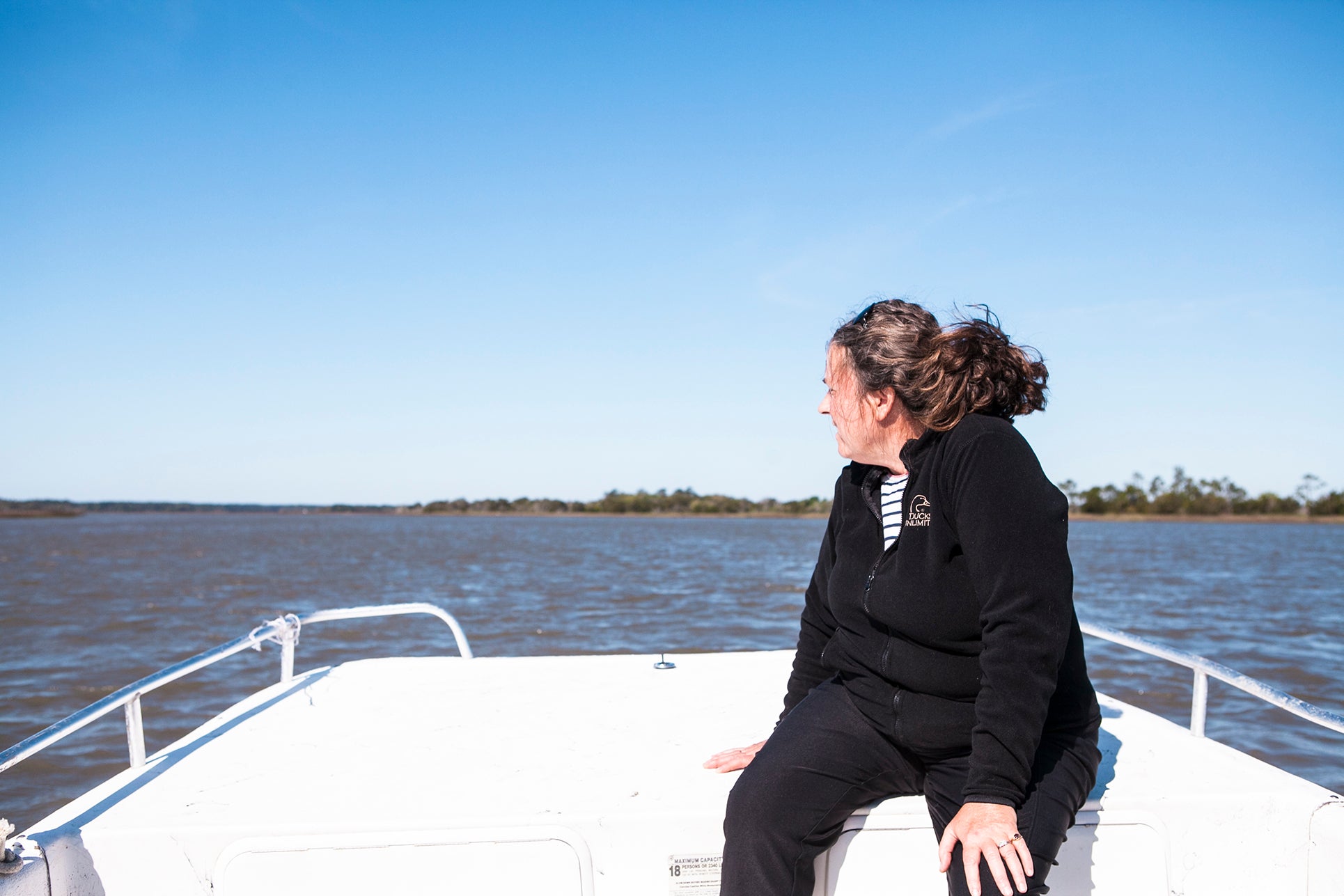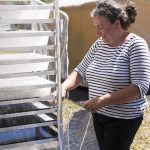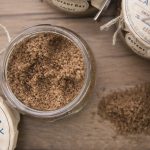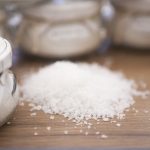She was relaxing in her kayak on a creek cutting through Edisto Island, trying to spy a bald eagle who had built a nest nearby. Bertha Booker ’87 was planning to spend the night sleeping on her kayak so she could rise early on the water and begin a full morning of birdwatching. But before tucking in for the evening, Booker needed to eat the burger she had packed for dinner. It sure would taste better with a little salt, she thought, knowing she had forgotten to bring any.
Floating along, Booker soon had a revelation: she was absolutely surrounded by salt – all she had to do was boil some seawater. So she did. The result not only produced seasoning for her supper, but ultimately a path to a new livelihood. Feeling self-sufficient, Booker, an aspiring farmer recently laid off from a corporate job, thought to herself: Why couldn’t I do this?
Five years later, Booker is the owner of Botany Bay Sea Salt, South Carolina’s first modern sea salt company. Just like that evening aboard the kayak, Booker still travels into Ocella Creek behind Edisto Island, close to Botany Bay Plantation, a state wildlife management area. But she’s not scooping mere spoonfuls of seawater up into a kayak anymore.
Instead, she’s now using a pump and hoses to suck up hundreds of gallons of water into plastic barrels stacked aboard a boat. From there the seawater is motored across the North Edisto River to a dock in Rockville, S.C., where it is transferred via more hoses to a large container inside a trailer hitched to Booker’s Subaru. She drives this seawater across Wadmalaw Island to a plantation, where the saltwater is fed into long, shallow ponds beneath greenhouses. As the water evaporates, sea salt is left behind, ready to be gathered, processed and packaged.
It might seem like a lot of logistics, but the labor involved in moving the 400-pound barrels is only half the battle. Years ago, Booker’s plan to make sea salt took state and federal regulators completely by surprise. It was not just the unknown food safety considerations which created concern, but the question of whether it was even permissible to harvest the state’s waters for that purpose. South Carolina health officials scoured the books and concluded, “Well, there’s nothing that says you can’t do it. But there’s nothing that says you can do it, either,” Booker recalled. In 2012, Booker finally received a green light to make and sell sea salt. As she succinctly puts it: “It was a long process for the world’s oldest product.”
Few people, perhaps, are headstrong and determined enough to persevere through the regulatory process of bringing an unusual new food product to market. Few, too, are capable of making the tidy, sea salt harvesting operation and farm that Booker has created on Wadmalaw. It took considerable effort and craftsmanship to level the salt ponds and construct the greenhouse-like tents that cover the ponds. Booker used a pipe bender to create the framing of the tents, twisting each pipe into the “gothic arch” shape necessary to shed condensation. She also mans the smoker when burning locally harvested live oak and pecan wood to flavor some of her salt. When it comes to sea salt, Booker does it all, ultimately selling her products at the Charleston Farmers Market, among other locations.
As Booker continually seeks to inform and improve her saltmaking, she’s also been delving into the local history of the craft. To her delight, Booker discovered the amazing coincidence that French Huguenot immigrant William Mellichamp started the Southeast’s very first commercial salt works at Botany Bay Island in 1724. In fact, the creek where Booker first made sea salt is known to locals as Mellichamp Creek.
There are other coincidences, too, including Mellichamp’s long-running interactions with colonial officials to secure the right to make sea salt. Eventually, his business was up and running, reportedly producing 16,000 bushels of salt by 1731. Four years later, Mellichamp’s son was entangled in a counterfeiting scheme, however, and the entire Mellichamp family fled to Georgia after the son escaped capture by leaping from a balcony in Charles Towne (Booker notes that Thomas Mellichamp later redeemed the family name by inventing an important new method of processing indigo).
The saltworks may have been shuttered until, almost 300 years later, Booker kayaked behind Edisto Island one evening and revived a Carolina tradition by seasoning her hamburger.









